Engineering
Vol.4 No.2(2012), Article ID:17422,7 pages DOI:10.4236/eng.2012.42013
Environments Aware for Prolonging the Lifetime of Sensor Nodes Deployed in WSNs
1Department of Electrical Engineering, Dayeh University, Changhwa, Chinese Taipei
2Department of Electrical Engineering, Asia-Pacific Institute of Creativity, Miaoli, Chinese Taipei
Email: jchen@mail.dyu.edu.tw
Received November 14, 2011; revised December 12, 2011; accepted December 18, 2011
Keywords: Lifetime; Path Loss Factor; Sensor Movement Sequence; Sensor Location Arrangement; WSNs (Wireless Sensor Networks)
ABSTRACT
Providing a pretty adequate environment condition between the transmission and the receiver for a WSN (wireless sensor network), in which deployed sensor nodes and fusion center, is investigated in the paper. Moreover, an algorithm promotes the energy efficient, increases the accuracy of sensing data and prolongs the lifetime of sensor nodes deployed over an WSNs is proposed. On the basis of adopting sensor management, which involves sensor movement sequences, sensor location arrangement, lifetime requirement for sensor nodes deploy surveillance environment, and the data fusion center, are addressed too. Simulation results from the lifetime performance for sensor nodes defeated by parameters about the environment around the WSNs are illustrated. Parameters aforementioned are including sensing distance, path loss factor, number bits of a transmitted packet, and interference suffering from the path of data transmission etc. Furthermore, the algorithm of sensor location arrangement is modified for the purpose of improving the lifetime performance in WSNs environments. In addition, simulation results show that the proposed algorithm in this paper is not only definitely to improve the energy efficient sufficiently, but the sensing accuracy and the lifetime performance of the sensor nodes are also prolonged significantly.
1. Introduction
Recently, the advantages of WSNs (wireless sensor network) has fast grown for applying to, such as, military surveillance, health caring, planet monitoring, and a lot of other kinds of relative fields. One of the most important reasons for lasting all the application of WSNs is the support of energy to each sensor nodes distributed in the sensing areas. Therefore, the schemes of concerting for prolonging the lifetime of sensor nodes become remarkable issues to discuss. According to the protocol of IEEE 802.15.4 [1], there are many factors that dominate the lifetime of sensor nodes which equipped with energy constrained battery. Hence, to the best of professional person’s knowledge, the evaluation of the survivability of sensor nodes in WSNs is critical concern in the designing of WSNs.
We proposed a scheme of adopting sensors location arrangement for the purpose of improving the lifetime performance of the WSNs scenario in this paper. It is known that the lifetime of every un-pre-located sensor will affect definitely the detection performance for WSNs. So far, there are several researches have been published in discussion the field of WSNs. The problems of dominating the lifetime performance of the sensor nodes in WSNs have been investigated in [2] in which the factors include the energy consumed for the transmission between the sensor nodes and the fusion center are considered. In [3] the application specific protocol architecture with local fusion for wireless micro-sensor was proposed for achieving efficient sensing. The data fusion and lifetime constraint in WSNs was investigated in [4] where the extending and qualifying the sensing distances and node densities of sensor nodes was studied. For designing of energy efficient sensing system binary decentralized detection algorithm by providing partial information about the state of nature to a fusion center was studied in [5]. Recently, a scheme of optimizing the network lifetime with a function-based network lifetime definition was studied in [6]. There are still many ways to extend the lifetime of wireless sensor networks, one who can by using appropriate sensor node coverage configuration and/or antenna power limitation for saving power. In recent years, many researchers have proposed many mobile BS methods to extend network lifetime and increase WSN service time. In [7] researches assumed that a BS deployed in a mobile device, such as a vehicle, moving with a certain speed, causes the BS to be periodically re-deployed to varied positions in order to increase the lifetime of WSN. The scheme moving the location of a BS to areas with lower activity to redistribute WSN traffic flow is presented in [8]. The authors in [9] to maximize the lifetime of WSN with the algorithm which is designed a delay-tolerant application for mobile BS. Thus, the original routing paths will change with the change in BS location and the WSN will need to re-generate new routing paths. In [10] authors presented a method with adopting the mobility BS and avoiding the attack from the enemy for prolonging the WSN lifetime. Two autonomous moving schemes for the mobile sink are alleviated in [11] in which the sink makes moving decisions without complete knowledge of network topology and the energy distribution of all sensor nodes causes the WSN lifetime be prolonged. In [12] the performance evaluation is held in considering consumed energy metric for mobile sink with two cases: when the sink node is mobile and stationary considering lattice and random topologies using AODV protocol.
Motivated by the preview work results, In this paper some factors, such as sensing distance, path loss factor, number bits of a transmitted packet, interference suffering from path of data transmission, are involved in the system performance analysis. An environment aware algorithm for promoting the energy efficient, increasing the accuracy of sensing data and prolonging the lifetime of sensor nodes for WSNs is proposed. The paper is organized as follows, the scenario model related to WSNs is described in Section 2. The lifetime performance analysis of WSNs is studied in Section 3. In Section 4 the results and discussion are illustrated. There is a brief conclusion is drawn in Section 5.
2. Scenarios Relate to WSNs
It is known that the realizable and the accuracy of sensed data gathered from the algorithm of decentralized processing in WSNs is more believable than that of the centralized processing, and the load of data transportation between each node can be reduced. In the paper a sensor network shown in Figure 1 is deployed with a fusion center (sensor C), the sensing distance (radius from the center) , and the transmission distance
, and the transmission distance , where the condition of
, where the condition of  can makes not only sure that all of the sensors without meeting the problem of existence of hole area, but they are also able to communicate with each other smoothly. Thereafter, the scenario of the WSNs shown in Figure 1 is a deployment with a local sensing fusion from N sensors. Before the analysis of lifetime performance is illustrated, the requirement of
can makes not only sure that all of the sensors without meeting the problem of existence of hole area, but they are also able to communicate with each other smoothly. Thereafter, the scenario of the WSNs shown in Figure 1 is a deployment with a local sensing fusion from N sensors. Before the analysis of lifetime performance is illustrated, the requirement of
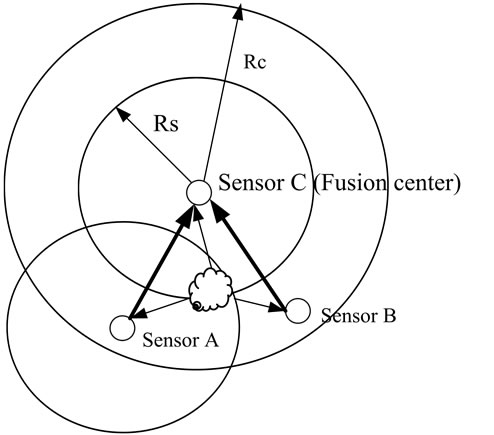
Figure 1. Diagram of local fusion of sensor data.
introducing to means of fusion among the sensor nodes is necessary. There two means of data fusion are included: 1) maximum number fusion, and 2) majority detection fusion. Basically, the fusion nodes are required to perform event detection based on the maximum measurement number, such that the missing probability,  , can be reduced. Consider that there is a maximum number,
, can be reduced. Consider that there is a maximum number,  , selected from n sensed measurements
, selected from n sensed measurements ,
,  , which is given as
, which is given as
 (1)
(1)
where  is the function of selecting the maximum one element, and the CDF (cumulate distribution function) of the events’ random variable for the selection fact can be written as
is the function of selecting the maximum one element, and the CDF (cumulate distribution function) of the events’ random variable for the selection fact can be written as
 (2)
(2)
where the measured values on each of the nth sensor node are considered independently each other. Hence, after the maximum value has been fused in the fusion center, the missing probability,  , of a single sensor node can be calculated as
, of a single sensor node can be calculated as
 (3)
(3)
where  represents the hypothesis that when the event happens,
represents the hypothesis that when the event happens,  represent the probability occurs in each event of fused sensor, and
represent the probability occurs in each event of fused sensor, and  indicated the detection threshold value. By the way, following up operation rule of the detection theory, after the maximum value is fused the detection probability,
indicated the detection threshold value. By the way, following up operation rule of the detection theory, after the maximum value is fused the detection probability,  , and false alarm probability,
, and false alarm probability,  , can be determined as
, can be determined as
 (4)
(4)
 (5)
(5)
respectively. Then, the cost function of detection error probability,  , can be given as
, can be given as
 (6)
(6)
where , and
, and  are corresponding to express the priori probabilities of event occurring and without occurring. Similarly, in the majority detection fusion, the false alarm probability,
are corresponding to express the priori probabilities of event occurring and without occurring. Similarly, in the majority detection fusion, the false alarm probability,  , and the missing probability,
, and the missing probability,  , can be expressed as
, can be expressed as
 (7)
(7)
respectively, where the random variable is used to make decision the states of an event occurring or without occurring. Thus, the detection probability,  , is given as
, is given as
 (8)
(8)
and the detection error probability,  , can be obtained as
, can be obtained as
 (9)
(9)
Once the detection probability and the error probability of the individual sensor node, accordingly, the fusion will be held immediately Basis on the condition that there are n events occur really from N sensor nodes, and the total missing probability and the false alarm probability of the local fusion can be correspondingly expressed as
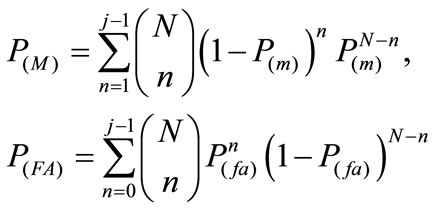 (10)
(10)
3. Lifetime Performance Analysis
In the paper three reasons are mentioned to analyze the lifetime performance of WSNs, though there are several parameters definitely control the lifetime performance, such as the sensing distance, the sensor numbers, and the fusion algorithm. The much most important reason should be the condition of transmission environments between the sensor node and the fusion center.
For a given event, e.g., the tracking of some targets, and assume that the WSNs is deployed in a squared area of size , the total number of sensor nodes is N, thus
, the total number of sensor nodes is N, thus  denotes the node density which is considered as uniformly distributed in the following discussion. The discrete Poisson distribution can be used to characterize the probability that there are g sensor nodes located within the area around the event [13]. Within the WSN the probability with random variable g can be expressed as
denotes the node density which is considered as uniformly distributed in the following discussion. The discrete Poisson distribution can be used to characterize the probability that there are g sensor nodes located within the area around the event [13]. Within the WSN the probability with random variable g can be expressed as
 (11)
(11)
It should be claimed that the covered area of WSN will be constrained avoiding the results from the simulation becomes divergent. In addition, by combining the previous equation with (6) for the purpose of determining the average detection error probability,  , in fusion center, it is obtained as
, in fusion center, it is obtained as
 (12)
(12)
In the case wherein the probability that any event is detected by at least g times within in sensor nodes can be calculated as
 (13)
(13)
where  indicates the sensing range in which a target can be detected, the pdf (probability density function),
indicates the sensing range in which a target can be detected, the pdf (probability density function),  , of the range counting from any node in WSNs to its gth nearest sensor node can be modeled as
, of the range counting from any node in WSNs to its gth nearest sensor node can be modeled as
 (14)
(14)
The most concerned event for lifetime performance of WSNs should be the supporting energy which is includeing both the transmission and the receive energies. The lifetime performance can be evaluated by defining how long the sensor node in the whole network to finish the duties involving data sensing and data fusion, that is, with N randomly deployed sensor nodes the sensing lifetime,  , should be definitely defined as
, should be definitely defined as
 (15)
(15)
where  denotes the savable energy of a single sensor node,
denotes the savable energy of a single sensor node,  represents the expectation operator, and the average energy of each sensor can be written as
represents the expectation operator, and the average energy of each sensor can be written as
 (16)
(16)
where  is shown in (11),
is shown in (11),  expresses the dissipated energy of a single sensor node, and it can be calculated as
expresses the dissipated energy of a single sensor node, and it can be calculated as
 (17)
(17)
where  denotes the exponent path loss [8],
denotes the exponent path loss [8],  and
and  represents the power supported to complete the transmission between transmitter and receiver of a fusion sensor and the power for amplifying the transmitted signal, respectively. There is also the parameter Bit which is the transmission bit number of one packet, which sizes depend on what communication schemes were adopted, i.e., the modulation schemes of the wireless communication will determine the size of Bit.
represents the power supported to complete the transmission between transmitter and receiver of a fusion sensor and the power for amplifying the transmitted signal, respectively. There is also the parameter Bit which is the transmission bit number of one packet, which sizes depend on what communication schemes were adopted, i.e., the modulation schemes of the wireless communication will determine the size of Bit.
3.1. Transmission Bit Number and Path Loss Factor
It is believed that lifetime of the sensor node will be deeply overruled by the length of the transmission bit number, Bit. Additionally, conditions of propagation channel between sensing node and the fusion center are involved in this study. The exponent path loss is considered as the parameter for evaluation the lifetime performance, and the path loss factor is given as [14]
 (18)
(18)
where  is the exponent path loss, then the length of the transmission bit number can be easily obtained as
is the exponent path loss, then the length of the transmission bit number can be easily obtained as
 (19)
(19)
Furthermore, the fading situation of the wireless communication channel is taken into account the simulation model. The channel fading model is characterized by the Nakagami-m statistical distribution which is the most useful one which is for experimental in accuracy. The severe fading of the channel situation is quantied with the fading figures, m. The larger value of m, the superior of the communication channel is [15].
3.2. Sensor Location Arrangement
Two scenarios in the paper are proposed, one of them is the random arrangement and the other one lines up arrangement of sensor nodes. The one shown in Figure 2 is the latter scenario in which the single sensor node assumed modeled as Poisson distribution. Consider the there are k sensors nodes selected from the total sensors randomly, and its probability can be written as
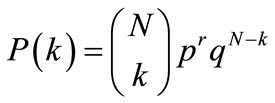 (20)
(20)

Figure 2. The scenario of local fusion from N sensors.
where . Thereafter, with the assumption described previously that means there are g sensor nodes are selected out from the N sensor nodes, and they can transmit the sensing data to fusion center after the sensing operations sequence of the event is completed. Hereafter, the error probability of detection under the case of that the sensor location arrangement with two lines up can be obtained by some random variables transform, and shown as
. Thereafter, with the assumption described previously that means there are g sensor nodes are selected out from the N sensor nodes, and they can transmit the sensing data to fusion center after the sensing operations sequence of the event is completed. Hereafter, the error probability of detection under the case of that the sensor location arrangement with two lines up can be obtained by some random variables transform, and shown as
 (21)
(21)
where  and
and  are both two parameters of the Poisson statistical distribution.
are both two parameters of the Poisson statistical distribution.
4. Simulation Results and Discussion
Consider some factors for the lifetime of a sensor node WSNs. For instance, the path loss factor,  , of the transmission channel between the sensor node and the fusion center, the bit number, Bit, for transmitting the sensed data to the fusion center, and the sensing range,
, of the transmission channel between the sensor node and the fusion center, the bit number, Bit, for transmitting the sensed data to the fusion center, and the sensing range,  , etc. The area is considered as
, etc. The area is considered as  square for the numerical results. The number of sensor nodes is assumed as
square for the numerical results. The number of sensor nodes is assumed as  for both the calculation of Figures 3 and 4. The results from comparing with different exponent path loss (
for both the calculation of Figures 3 and 4. The results from comparing with different exponent path loss ( ) are shown in Figure 3, where the normalized sensing lifetime versus sensing distance are plotted, and four different values of
) are shown in Figure 3, where the normalized sensing lifetime versus sensing distance are plotted, and four different values of , 1.44, 1.43, and 1.42 are adopted to (18). It is clear to understand that the lifetime will be prolonged after the exponent path loss increases, since the path loss factor is inverse proportional to the exponent path loss. It is well known that the bit numbers is the loading for transmission due to the energy dissipated, that is, the heavy of the loading has the more energy will be consumed for a sensor node. The phenomena of mentioned above are validated with many graphs in Figure 3 where the normalized sensing lifetime versus sensing distance is evaluated with different kinds of data transmission. The result in applying Bit = 128 for all the same of the lifetime is shown and marked with the start symbol. The other two lines show the results from adopting threshold values of the lifetime,
, 1.44, 1.43, and 1.42 are adopted to (18). It is clear to understand that the lifetime will be prolonged after the exponent path loss increases, since the path loss factor is inverse proportional to the exponent path loss. It is well known that the bit numbers is the loading for transmission due to the energy dissipated, that is, the heavy of the loading has the more energy will be consumed for a sensor node. The phenomena of mentioned above are validated with many graphs in Figure 3 where the normalized sensing lifetime versus sensing distance is evaluated with different kinds of data transmission. The result in applying Bit = 128 for all the same of the lifetime is shown and marked with the start symbol. The other two lines show the results from adopting threshold values of the lifetime,  and
and . The line marked with cross symbol shown in Figure 4 illustrates that the normalized lifetime will turn to a longer value, that is, from 0.3 to about 0.8, the transmission bit number is assigned a value from
. The line marked with cross symbol shown in Figure 4 illustrates that the normalized lifetime will turn to a longer value, that is, from 0.3 to about 0.8, the transmission bit number is assigned a value from  to
to , respectively. The results validates the fact that transmission bit number is one of a major role dominates the lifetime of a sensor node in WSNs.
, respectively. The results validates the fact that transmission bit number is one of a major role dominates the lifetime of a sensor node in WSNs.
Moreover, different arrange of sensor nodes is considered in Figure 5 there are two scenarios for arranging sensor nodes, random location arrangement and two lines
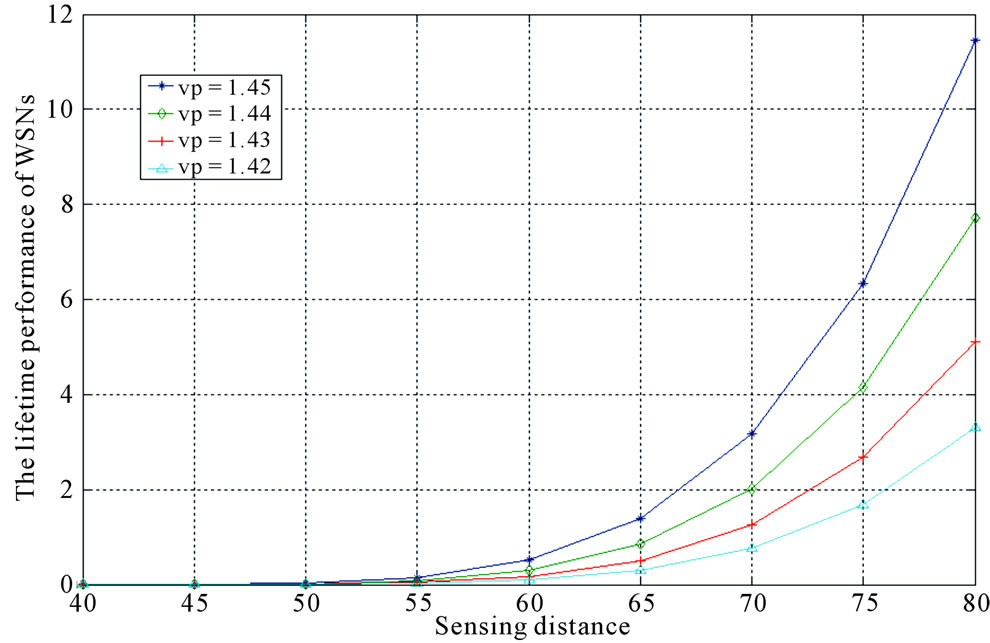
Figure 3. Lifetime performance vs sensing distance with values of path loss factors.
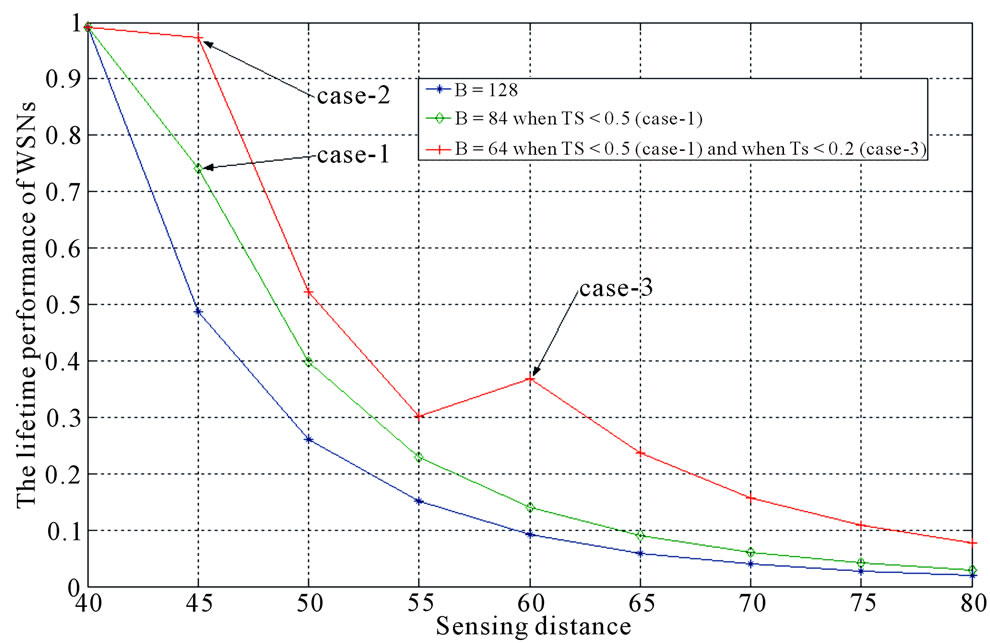
Figure 4. Lifetime performance vs sensing distance by reducing transmission bit number.
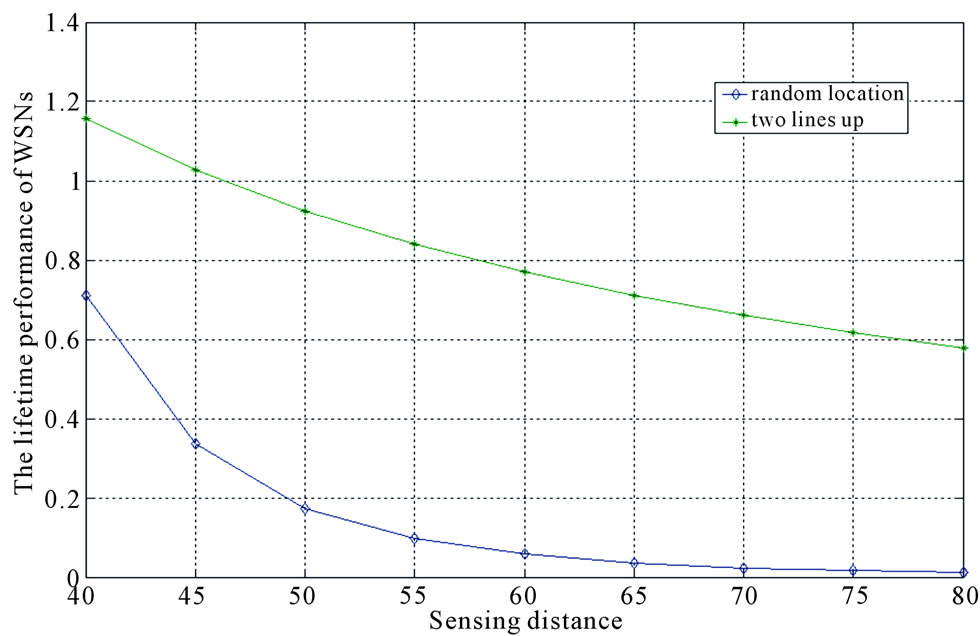
Figure 5. Lifetime performance vs sensing distance with different arrangement sensor nodes.

Figure 6. The probability of sensing accuracy vs sensing distance considered different fading figures.
up arrangement, with 50 sensor nodes are applied. It is valuable to note that the lifetime is prolonged under the condition which arranged the sensor nodes considering of two lines up arrangement. The probability of sensing accuracy vs sensing distance considered under different fading channel is illustrated in Figure 6. The severe situations of fading is quantied with the fading parameters, m = 2, 3, 5, in this simulation. It is easy to observe that the accuracy will become outperform when the values of fading parameter promoted. Especially, the phenomenon is more significant when the sensing distance is far away the fusion center.
5. Conclusion
The issue of lifetime performance is analyzed in this paper. The main reasons to promote the energy efficient, increase sensing accuracy and prolong the lifetime of sensor nodes for WSNs (wireless sensor networks) is described. On the basis of adopting sensor management includes sensor movements sequence and sensor location arrangement, we address the issue of lifetime requirement for sensor nodes which deployed in a surveillance nodes and the data fusion center. The numerical results which definitely show that different arrangement methods are not only able to improve the energy efficient sufficiently, but the sensing accuracy and the lifetime of the sensor nodes are also obtained significantly promoted.
REFERENCES
- IEEE, IEEE 802.15 WPAN™ Task Group 4 (TG4), http://www.ieee802.org/15/pub/TG4.html
- X. Wang, et al., “On Data Fusion and Lifetime Constrains in Wireless Sensor Networks,” Proceeding of IEEE International Conference on Communications, Glasgow, 24-28 June 2007, pp. 3942-3947.
- W. R. Heinzelman, A. Chandrakasan and H. Balakrishman, “An Application-Specific Protocol Architecture for Wireless Micro Sensor Network,” IEEE Transaction on Wireless Communications, Vol. 1, No. 4, 2002, pp. 660- 670. doi:10.1109/TWC.2002.804190
- X. D. Wang, et al., “On Data Fusion and Lifetime Constraints in Wireless Sensor Network,” Proceeding of IEEE International Conference on Communications, Glasgow, 24-28 June 2007, pp. 3942-3947,.
- J.-F. Chamberland and V. V. Veeravalli, “Asymptoic Results for Decentralized Detection in Power Constrained Wireless Sensor Networks,” IEEE Journal on Selected Areas in Communications, Vol. 22, No. 6, 2004, pp. 1007- 1015. doi:10.1109/JSAC.2004.830894
- J. Li and G. AlRegib, “Function-Based Network Lifetime for Estimation in Wireless Sensor Networks,” IEEE Signal Processing Letters, Vol. 15, 2008, pp. 533-536. doi:10.1109/LSP.2008.926499
- S. Basagni, A. Carosi, E. Melachrinoudis, C. Petrioli and Z. M. Wang “Controlled Sink Mobility for Prolonging Wireless Sensor Networks Lifetime,” Wireless Networks, Vol. 14, No. 6, 2008, pp. 831-858. doi:10.1007/s11276-007-0017-x
- Y. Y. Yang, M. I. Fonoage and M. Cardei “Improving Network Lifetime with Mobile Wireless Sensor Networks,” Computer Communications, Vol. 33, No. 4, 2010, pp. 409- 419. doi:10.1016/j.comcom.2009.11.010
- Y. S. Yun and Y. Xia, “Maximizing the Lifetime of Wireless Sensor Networks with Mobile Sink in Delay-Tolerant Applications,” IEEE Transactions on Mobile Computing, Vol. 9, No. 9, 2010, pp. 1308-1318.
- M. Marta and M. Cardei, “Using Sink Mobility to Increase Wireless Sensor Networks Lifetime,” World of Wireless, Mobile and Multimedia Networks, Newport Beach, 23-26 June 2008, pp. 1-10.
- Y. Z. Bi, J. W. Niu, L. M. Sun, H. F. Wei and Y. Sun, “Moving Schemes for Mobile Sinks in Wireless Sensor Networks,” IEEE International Performance, Computing, and Communications Conference, Los Angeles, 11-13 April 2007, pp. 101-108.
- T. Yang, M. Ikeda, G. Mino, L. Barolli, A. Durresi and F. Xhafa, “Performance Evaluation of Wireless Sensor Networks for Mobile Sink Considering Consumed Energy Metric,” IEEE International Conference on Advanced Information Networking and Applications Workshops, Perth, 20-23 April 2010, pp. 245-250.
- S. Maheswararajah and S. Halgamuge, “Sensor Scheduling for Target Tracking Using Particle Swarm Optimization,” IEEE 63rd Vehicular Technology Conference, Vol. 2, Melbourne, 7-10 May 2006, pp. 573-577.
- T. S. Rappaport, “Wireless Communication, Principles and Practice,” 2nd Edition, Prentice Hall Inc., Upper Saddle River, 2002.
- M. Nakagami, “The m-Distribution—A General Formula of Intensity Distribution of Rapid Fading,” In: W. G. Hoffman, Ed., Statistical Methods of Radio Wave Propagation, Pergamon Press, New York, 1960, pp. 3-36.

